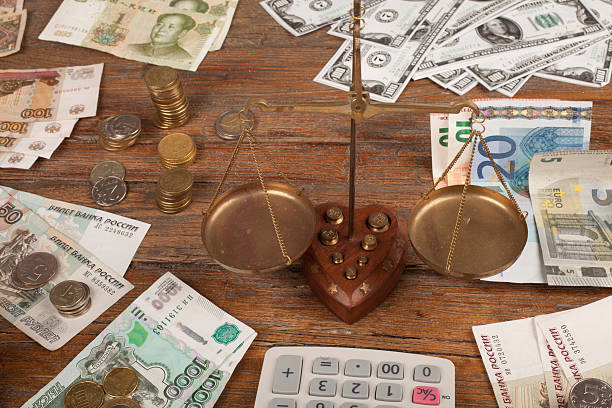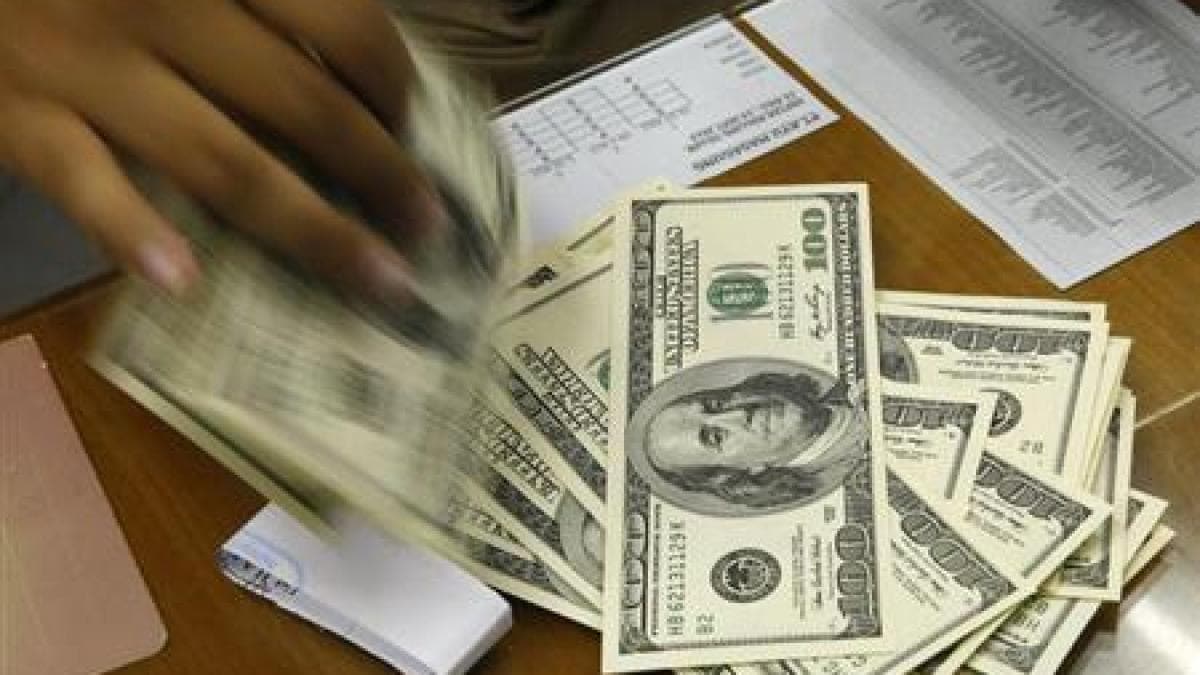Having a war chest is helpful in tough times, whether it is for food or money.

Having a war chest is helpful in tough times, whether it is for food or money. The rupee depreciated about 22% in just four months in 2013, falling from 53.67 to 68.81 US dollars between May 1 and August 28. Even while the Reserve Bank of India (RBI) increased its benchmark lending rate by 300 basis points, from 7.25% to 10.25%, during this time, the nation’s foreign exchange reserves decreased from $294.31 billion to $275.49 billion.
Focus on the previous year. The rupee has lost just around 6% of its value from October 29, 2021 (from 74.94 to 79.69 to the dollar), while the RBI repo rate has increased by only 140 basis points (from 4% to 5.4%). However, this has been accompanied by a more significant decline in foreign exchange reserves, from a peak of $642.02 billion to $550.87 billion as of September 9 of this year.)
The US Federal Reserve maintained its fund rate at 0-0.25% throughout 2013. Between May and November of that year, the European Central Bank (ECB) even reduced its benchmark refinancing rate from 0.75% to 0.25%. Inflation in consumer prices averaged 1.47% in the US and 1.35% in Europe in 2013.
The US Fed’s proposal to gradually reduce (“taper”) its purchases of bonds and other assets totaling $85 billion per month was a major factor in the 2013 crisis. The strategy was first made public by Ben Bernanke, the then-chairman of the Federal Reserve, on May 22, 2013, although actual tapering did not begin until the end of that year. However, that announcement, which only spoke of a gradual winding down of monetary stimulus (read: the printing of dollars) as opposed to a tightening, had a significant impact on India, primarily because of the country’s significant current account deficits (CAD) in its external balance of payments.
In 2011–12 and 2012–13, these reached record highs of $78.16 billion and $88.16 billion, respectively (April-March). The “taper tantrum” raised questions about the nation’s capacity to fund its enormous CADs since it caused capital flows to stop and because FX reserves had already begun to decline from their previous high of $320.79 billion, reached on September 2, 2011.
A run on the rupee was the outcome. The RBI was compelled to sell dollars from its reserves and raise interest rates to protect the currency against speculative attacks. The major central banks just began to taper off monetary stimulus, or slow the pace at which they added liquidity to their economies in 2013. They are now tightening by lowering the money supply and increasing interest rates.
The US Fed has raised its funds rate from 0-0.25% to 2.25-2.5% since mid-March, and on September 20–21, it is anticipated to raise it even further to a target range of 3-3.25%. Additionally, the ECB increased its main refinancing rate from 0 to 1.25%. For the simple reason that annual retail inflation is currently averaging 8.3% in the US and 10.1% in the European Union, they are unlikely to halt.
People in those nations last saw these price rises in the early 1980s. In contrast to 2013, their central banks’ adherence to a 2% inflation target would need genuine monetary tightening and long-term high interest rates.
That has an impact on the flow of capital into India. If anything, rising interest rates in the US and Europe are siphoning money away from emerging countries. India’s predicted CAD of $120 billion in 2022–2023, which would surpass even the levels of 2011–12 and 2012–13, does not help. Therefore, both the external capital flows and the CAD situations are worse.
The rupee hasn’t been in free decline, and the RBI hasn’t had to use extraordinary monetary measures as it did during the taper tantrum era, despite the far more adverse external environment. Rates might still go up, but more so to curb inflation than devaluation.
The main reason why things have changed is that India came into this crisis with far more financial resources than it had in 2013. With $642.02 billion in forex reserves as of October 29 of last year, there was more than enough firepower to dissuade any speculator from taking short positions on the rupee, including through “non-deliverable forward contracts” in offshore markets like Singapore and Hong Kong.
These positions entail selling the rupee with the expectation that it will depreciate against another currency and booking profits by repurchasing it later at a lower exchange rate. Many nations have used the tactic of building up sizable foreign exchange reserves, notably following the lessons learned from the taper tantrum of 2013, the 1997–98 Asian financial crisis, and George Soros’ 1992 “shorting” of the pound.
India’s foreign exchange reserves have indeed declined by more than $91 billion since their high less than 11 months ago. However, just like weapons and ammunition in a conflict, reserves are supposed to be used in a crisis. And it matters more when one starts with a stockpile of almost $650 billion than it does when one has less than $300 billion.
We may compare this to the food industry, where on July 1, 2021, inventories of rice and wheat in government godowns reached an all-time high of 109.47 million tonnes (mt). Since then, they have decreased to 60.11 mt on September 1, which is a five-year low when compared to the same period last year.
The grain mountain of the Food Corporation of India was helpful in this instance as well, especially during a time of crisis. In the aftermath of the COVID-caused economic disturbances, the public distribution system (PDS) not only provided what was promised but also proved to be the sole reliable social safety net. One poorer crop might very well do to cereal prices what the taper tantrum did to the rupee; the value of that surplus grain is also being realized now when stockpiles are at bare minimum levels of comfort.
Nevertheless, building up food and foreign cash stockpiles comes at a price. In terms of food, it simply refers to the expense of keeping and sustaining inventories over what is necessary for PDS operations. For 2021–2022, this buffer’s “carrying cost” was calculated at Rs. 5.6 per kilogram. It would have amounted to around Rs 33,600 crore given that the average amount of equity held by the FCI over the year was nearly 60 mT greater than required.
In the case of foreign exchange reserves, when the RBI purchases extra dollars and then issues domestic currency in exchange, the situation is more convoluted. Therefore, it sells government bonds to try to “sterilize” (or mop up) this rupee liquidity to stop inflation. There is a fiscal cost to reserve building up if the interest payable on these exceeds the profit the RBI gets by investing its foreign assets in foreign securities and banks.
But maintaining food and currency reserves comes at a price that is comparable to maintaining a standing army and paying for defense. Only during economic downturns or when war breaks out can they prove useful. A budgetary and strategic analysis would determine if and how much of these expenditures would be borne by the government.
The three “Fs”—foreign exchange, food, and fuel—have historically restricted economic progress in India. In the 1960s, the first two were a major concern; the third in the 1970s; and the first two in the years leading up to the 1991 payments crisis. The first two issues have been lessened by stockpiling, but there is still no cure for the vulnerabilities caused by oil, gas, and coal.




